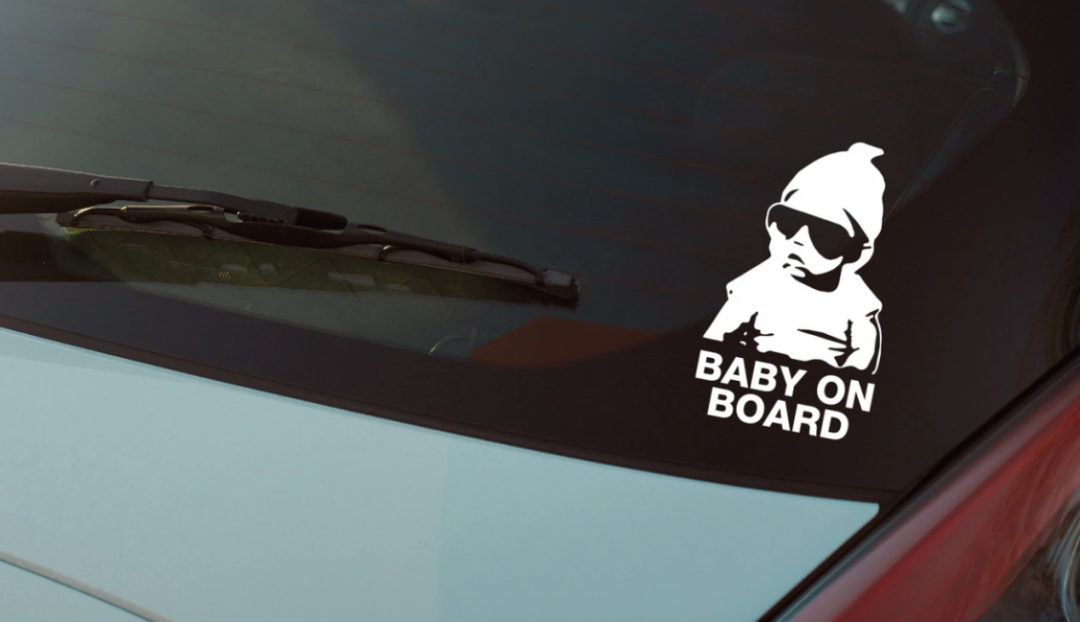Author: Mr.Yu
In 2022, we have experienced the third Spring Festival that was ruined by the pandemic.
A few days ago, we talked about the things that happen in the cabin when playing games in “You’re making cabin games too easy” (link: https://www.42how.com/article/5818). Some friends left messages saying “it’s all nonsense” while others who are dedicated to cabin games expressed their pleasure in seeing the team’s efforts receiving attention.
Regardless of support or opposition, we always believe that the people sitting in the cabin are the most complex and uncertain.
We have noticed that in recent years there are more and more designs and functions in the cabin that consider child passengers: from in-car entertainment screens to content platforms for children, from rear passenger monitoring to thermos boxes and small table boards for making milk powder, from in-car speech optimization for children’s communication habits to the copilot seat capable of turning in situ…
This time, we will discuss a more hardcore in-car demand: taking care of children.
In order to better return to the essence of the demand, we had discussions with eight industry insiders and outsiders to see their opinions on the possibility of taking care of children in the car. From the birth of children to the growing years, what problems did they encounter in travel scenarios, what are the real pain points that need to be solved, and what are the expectations for the industry.
At the beginning, we originally thought that technology was omnipotent. Unexpectedly, when facing the human infants, technology is somewhat powerless.
“It’s the best to have a larger TV in the car”
- Ms. Li, investor and mother of three children
- Eldest son, 10 years old, youngest son, 3 years old
Children grow too fast. The older one stopped wanting to stay in the safety seat at around one year old. The youngest, who is almost three years old, has grown to a height of 1.1 meters and can already fasten his own seat belt. Currently, the child car rental industry is very popular and convenient in public places like parks and museums. Therefore, whether the cabin can accommodate strollers is not a big problem for us.
For our family, it would be better to have a larger TV or screen in the car. For journeys longer than two hours, it is essential to have a TV. Our MPV has a TV and many DVD discs on board. When the journey is long, the children will stay quiet and watch movies at the back. In Beijing, traffic jams are very common, so if there is a TV, adults can be freed up and not be exhausted from interacting with the children.
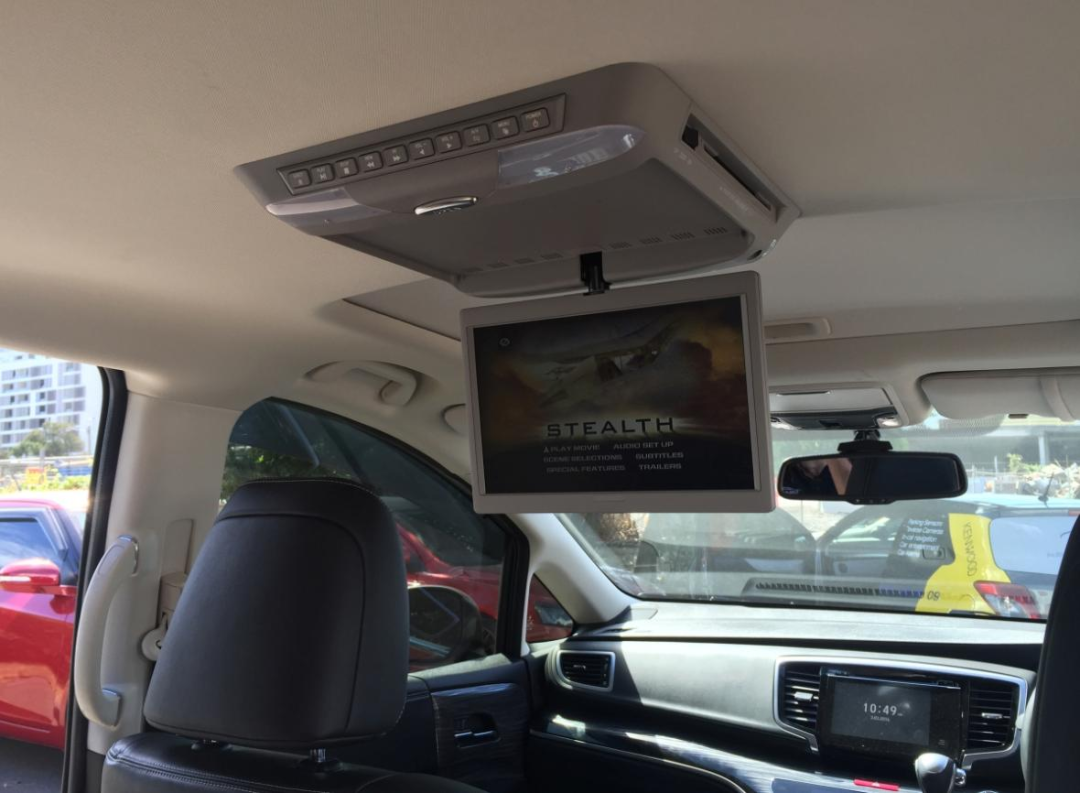 People say that looking at things in a car can hurt your eyes. But since we don’t constantly look at things in the car, it’s actually not that bad. It’s better than children getting in the car and immediately burying their heads in their phones, isn’t it?
People say that looking at things in a car can hurt your eyes. But since we don’t constantly look at things in the car, it’s actually not that bad. It’s better than children getting in the car and immediately burying their heads in their phones, isn’t it?
I remember when my oldest child was born ten years ago, I breastfed her for eight months. There was a small curtain in the car that, when pulled, became a private space. Nowadays, many shopping malls have nursing rooms where normal activities such as breastfeeding and changing diapers can be done during the shopping process, so you don’t necessarily have to do it in the car.
Some cars emphasize intelligence and voice chat, but is that really a good thing? At least for me, I don’t like it. I think a car is just a car, and we don’t live in it, right?
“In-car entertainment is also a way to take care of children”
-
Sean, Product Manager of Intelligent Cabin at Sean Travel Company
-
Da Bao, 9 years old; Xiao Bao, 2 years old
The most common thing I’ve seen in cars is multimedia entertainment, and there are many cars with app stores that have apps for telling stories, singing children’s songs, and watching animations. This should be the simplest child-rearing application. I saw a Mercedes-Benz promotional video where the vehicle could turn into a cradle with its built-in suspension function.
For functions specifically designed for child-rearing in cars, entertainment is also a way to take care of children, so it must exist. “The most experienced thing for me is driving alone with a child. For younger children who want to watch cartoons, I can use the car’s app to play children’s animations for them to watch, so the child will sit still for a while.” For older children who want to listen to songs and sing, I can use the KTV in my car to let them use it.
From some of my personal needs, I still hope that some functions can be realized in the future. Singing, watching cartoons, and telling children’s stories are already available in some cars, and the technology is not difficult. “If there are child seats that come with the car from the factory, this would maximize their use of the car seat.” Finally, there is the rear monitoring system. Can I use the DMS and OMS cameras inside the car to monitor my child’s specific behavior in the rear seats and warn against dangerous behavior while driving?
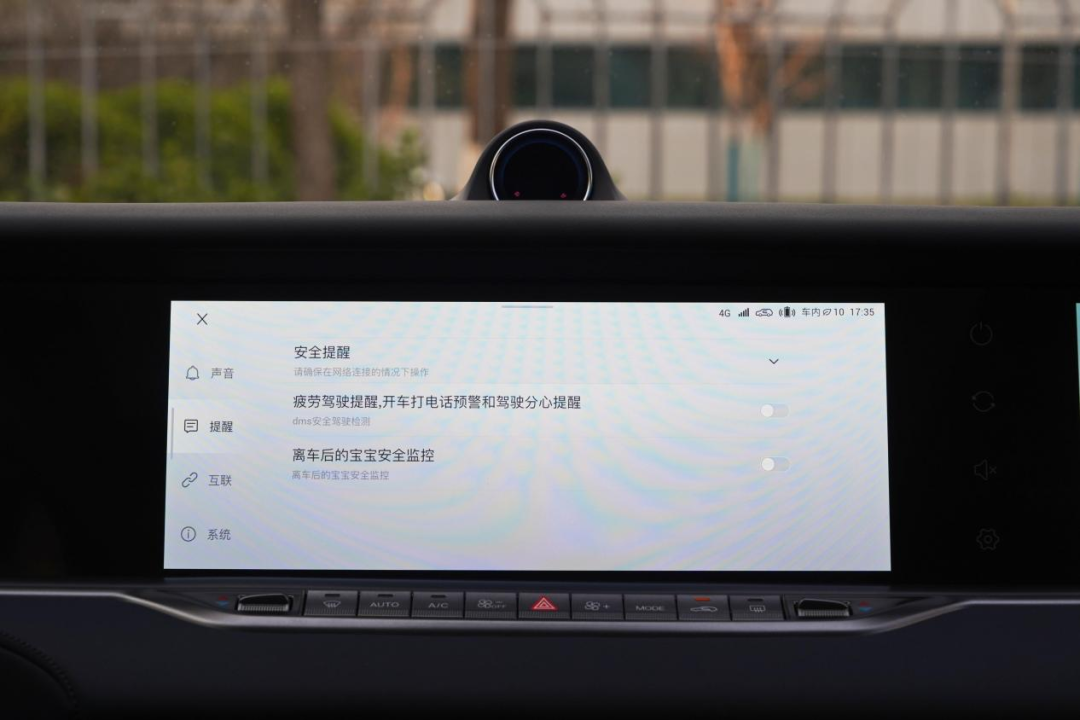
“I’m strongly against screens for children in cars”
-
Tingting, Social Media Influencer
-
Baby, 9 years old
From the few months after my child was born, I would often go out alone with her in the car.The first problem I encountered was the interface of children’s car seats, which was very frustrating, even angering. When my child was born in 2012, there was no standardized interface like ISOFIX in the car. Child safety in the car is a big deal, and every time we need to use a safety seat, it’s a big project, which is really annoying.
Feeding was also a pain point. When she was little, we had to bring a thermos with us every time we went out, and pour hot water at a controlled temperature. When the child was hungry, we took out the whole set of tools and operated it on site. It might be very convenient if there was a constant temperature device in the car.
When the child reaches 8 years old, they no longer need a safety seat. We may not realize this when the child is sitting in a safety seat, and when we choose the configuration of a new car, we don’t have a heated rear seat. Sometimes it’s inconvenient to go out in winter. When we get into the car in winter, the temperature of the rear seat is too low, and it’s very uncomfortable to sit on it. We can only let the child sit in the front seat.
Sometimes for a long self-driving trip, the child will become uncomfortable, irritable, or even cry after a long time. We had to take out the iPad and hang it behind the front seat to play downloaded animations for the child. However, we strictly control the use time, and at most only let the child use it for more than ten or twenty minutes each time. Having said that, the child has been exposed to electronic devices such as iPads and mobile phones for a long time at home. One time when I saw her playing with the iPad in the back seat, her whole body was huddled up. This is not good, and I am firmly opposed to having screens in the car.
As the child grows up, iPads and other electronic devices are no longer used in the car. She began to be interested in the world outside the car, so sometimes we will lower the car window slightly. Especially after the child learned to read, her curiosity was stimulated. Once when we drove past an office building, the child read out the three characters and asked us, “Are people inside writing?” It was really cute.
When she was just born, the basic needs of safety, eating, drinking, and changing diapers could be met as long as the car was equipped with them. More needs for both the child and the adult appeared gradually as the child grew up.
“The range is not determined by the car, but by the child’s endurance.” -Hao Zi, social media platform visual designer
- Hao Zi, visual designer for social media platforms
- Baby, 3 years old# Translation
I have always been driving my family’s MINI Cooper, and I am not really fond of the trend of smart cars.
I think the three most important needs for child passengers in a car are safety, space, and storage.
It’s okay for us to go out by ourselves, but when we go to work, we rely on our parents. However, for the family car that we’ve had for a long time, there is no ISOFIX interface dedicated to children’s car seats, and the elderly’s knowledge regarding this matter is different from that of the younger generation. In our family, the grandparents are freestyle when it comes to this, with one person driving while the other holds the child on their lap. We find it headache-inducing, but it’s not easy to say anything.
When it comes to entertaining children, we connect our phones to the car’s Bluetooth and play Spotify or audio content from early education platforms, which is usually enough.
When children are very young, their “endurance” pretty much determines how far we can go out. So, when we go out with our children, we tend to have a lot of things packed in the car, almost to the point of filling up the back seat. Everything around the child’s car seat, such as the buckle and the seat back, is utilized to the fullest. This is what it means to make the most of every inch of space.
In the future, it would be great if cars could have more airbags designed specifically for child passengers, more storage space, and a more reasonable layout.
“Child car seat is really important, and I hope the industry can establish and execute unified standards.”
-
Fangfang, Media Personnel
-
Baby, 7 months old
Let’s start from when the child was born.
The baby was born in early October and has gone through a complete winter in Beijing. Comfort in the car, just like the temperature and humidity, is something we are concerned about. Let’s take winter for example. Before boarding the car, the father would adjust the temperature to a comfortable level, and only then would we go downstairs. My parking spot is also exposed to direct sunlight in the summer, so I can ventilate the car before boarding it. For infants in their early months, who are still in a fragile stage, having the ability to adjust the temperature and humidity for comfort is definitely something we are concerned about.
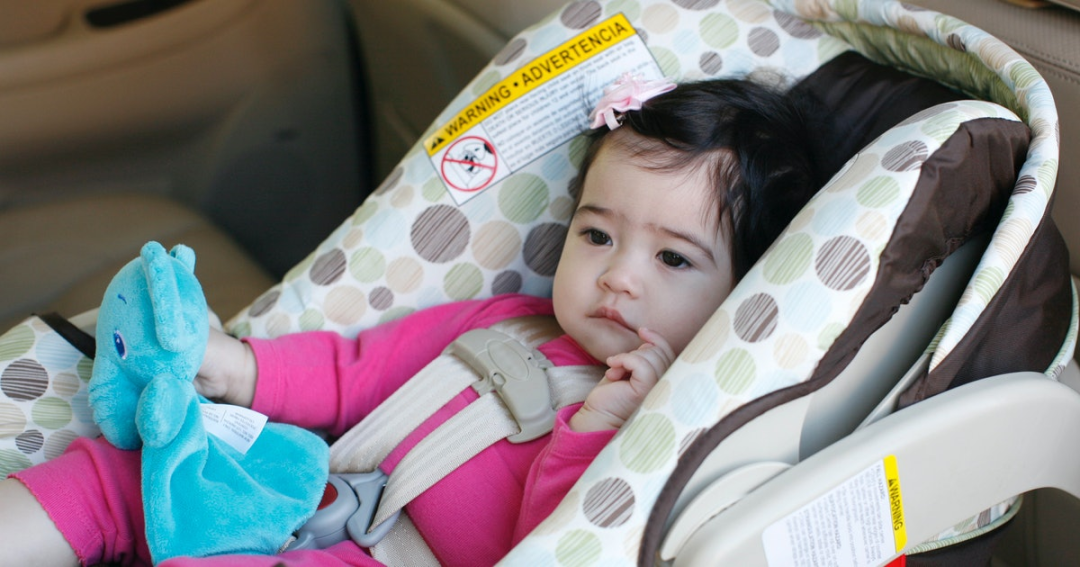 For the screens on the car, on the one hand, they may cause damage to the vision of children in the developmental stage. On the other hand, I am more concerned about the potential safety issues. Will there be more serious injuries in the event of a collision? Also, are these screens connected to the internet? Is the content they play controllable? If there is inappropriate content, will it have an impact on the child’s cognition?
For the screens on the car, on the one hand, they may cause damage to the vision of children in the developmental stage. On the other hand, I am more concerned about the potential safety issues. Will there be more serious injuries in the event of a collision? Also, are these screens connected to the internet? Is the content they play controllable? If there is inappropriate content, will it have an impact on the child’s cognition?
Furthermore, if more and more cars with screens appear, will children have to watch them when they get in the car in the future, and will cars without screens become unpopular? Would that not create anxiety for everyone? Will the automotive industry make more rational and long-term considerations in this regard?
This is obviously not a good idea.
I think that it is better for children to have a better view of their surroundings while sitting in the car. Like when I was a child riding in a car, I was always curious about the world outside and the scenery on the road. If someone could talk to me and satisfy my curiosity, I would be very happy.
As for whether intelligent voice systems in cars can soothe children, I remain skeptical. You see, most of the time, even adults have a hard time communicating with voice assistants, let alone children. According to the current understanding and ability of voice assistants, it is still unknown to what extent they can interact with children’s language skills.
Regarding another pain point, I found that sometimes the angle of a children’s safety seat and the inclination angle of the car’s rear seat are not well matched and may not be very secure and stable. If automakers can collaborate deeply with companies that design and produce child safety seats for research and development, or enforce a common set of standards, things might be much better. At least it would save us a lot of worry.
“Completely illogical to have a pain point about soothing children.”
-
Gu Yue, an employee in the automobile networking industry
-
Baby, 6 years old
There are still many needs for children in the car, which need to be discussed from both a hardware and software perspective.
In terms of hardware, there needs to be a safety seat interface, a simple child seat, and a child lock.
At the software level, there needs to be a life detection system in the car, a sleep soothing mode, and a multimedia child mode.
I believe that the child mode belongs to human care and is indeed necessary. However, product designers design from a subjective perspective and cannot solve real needs, and even the designers themselves may not have children. The needs do exist, but the unpredictability and great variability of children’s needs make it difficult for a standardized product to meet them.Comforting children is often accomplished through various atmosphere and safety functions, instead of the illogical aspect of entertaining them with ‘Hunger Games’. When children become uncomfortable while sitting in safety seats for a long duration, it may be necessary to soothe them through story-telling, chatting with NOMI, singing, watching cartoons on a phone screen or outright shouting.
While travelling, taking care of children is categorized into infancy and adolescence. Infants require more safety and functional needs catered towards parents, whereas toddlers only require the usage of provided functions without decision-making authority of their own. Adolescents are more challenging to please due to their diversified desires that cannot always be satisfied with just one function. Sometimes even adults need to satisfy their demands.
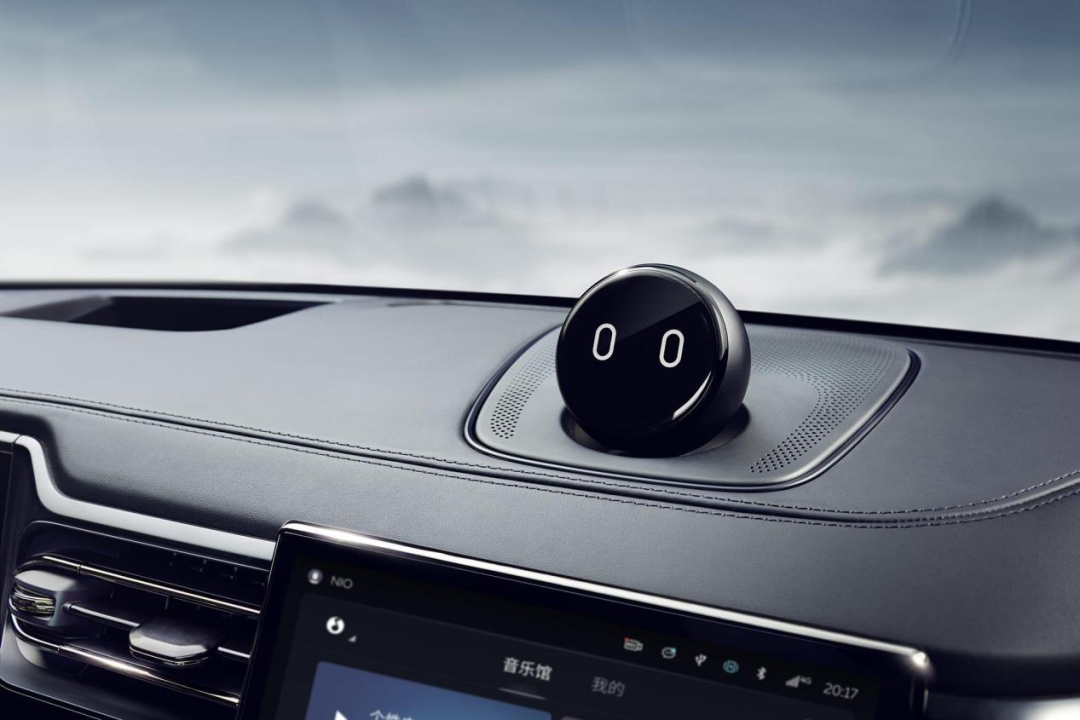
NOMI is reportedly popular with children
“Children need their own on-board entertainment.”
-
Xiao Bin, Director of Product Management at Himalaya
-
My Baby is 4 Years Old
I have seen some parenting features related to the cabin, and I remember that Great Wall has a function of detecting whether children have exited from the rear seats. The alarm would sound if a mistake occurs. Zebra has launched secure auto seats and various rear screens to keep children from misbehaving. A major domestic chip factory also talked to us before regarding child behavior detection based on DMS and OMS, with the ultimate goal of playing Himalayan children’s audiobooks.
I think that there is a genuine need for user-friendly parenting designs in the cabin. For instance, my child sits in a safety seat in the rear cabin, but his attention span is only a few minutes. During long trips, he becomes irritable (assuming he is not asleep). At such moments, it is necessary to provide him with some content to divert his attention. For example, I use a Bluetooth speaker placed in the rear compartment to play the Children’s version of Detective Mike Fox on Himalaya or hand him a read-to-me book to listen to the content. Parents can take this opportunity to glance at their phones.

Currently, there are two significant issues. First, I like to listen to music or other audio content that my child does not enjoy. He will start to whine and ask me to switch to children’s content. Due to this, I think it is necessary to isolate the different sound areas. Second, there is a need for child-oriented intelligent devices. Actually, children like interacting with various things. However, all current in-car AI assistants are geared towards drivers, rather than being designed for children. Children are frequently unable to understand the interactions of such programs and become bored after only a few plays. In the future, different vehicle areas should have distinct sound zones, and there should be AI interactive characters targeting rear-seat child passengers.
“Songs Make Automobiles No Longer the Island of Entertainment.”- Xiaojiang Leishi KTV
- Single, unmarried, and childless
When it comes to designing for the “bringing up children” needs in the car, many cars have safety features for children, but there are very few cars that focus specifically on providing children’s content and entertainment.
As someone who develops in-car software, my interpretation of the “bringing up children” function is different types of children’s content, such as Uncle Kai’s storytelling, and ideall ONE is currently working on introducing children’s content. This is what I understand as the “bringing up children” function.
In terms of the necessity of this function, let’s consider the user scenario of a family transitioning from a couple to a family of three. I believe that the proportion of children is very high, and the initial choice is based on safety and space, followed by the need for the “bringing up children” function. This function should be able to meet the needs of bringing up children aged 1-7 years old, such as videos, singing, and games. After the age of 7, children will need to do homework, instead.
I believe that there is indeed a demand for bringing up children in the car, but it hasn’t been put on a larger platform for discussion yet.
What is currently being discussed more in the industry is full car control, where the driver can control more of the car’s functions, such as adjusting the seats, controlling the screens throughout the car, such as the rear-seat headrest screens and ceiling screens, and so on.
I want to explain it in a more romantic way. Cars are currently isolated information islands, and entertainment is not a one-person affair. Singing is a way of communication that is more abstract and emotional than language. After the car has completed the construction of every island, it needs to connect each lonely island further, so that people are no longer alone, and cars and homes can hear each other’s voices, and everyone can be the focus of attention, cheering for each other.
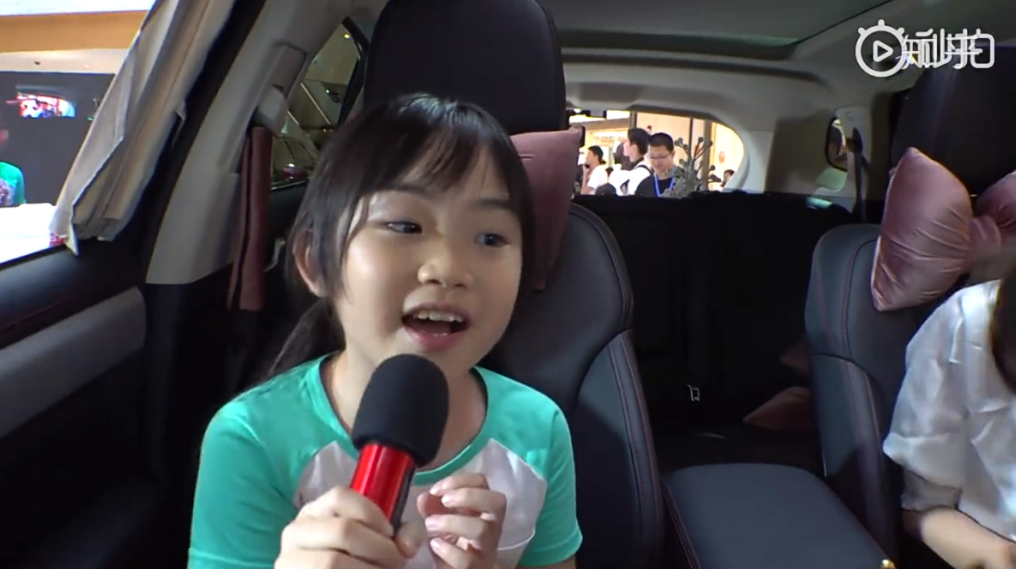
Finally
The slogan of “the third space” in the car has been shouted for so long, resting, watching movies, singing K songs, playing games, and even working and studying are all possible. Only the needs of little children and the “bringing up children” features have not been given systematic attention in the industry.
Speaking of which, when I was looking for pictures to use in this article, I noticed something interesting.
When searching for the same keywords, Chinese search engines all had “BABY IN CAR” stickers as the results, which are the kind you can often see on cars. In contrast, international search engines have almost every baby’s picture in a child safety seat.
I don’t want to say anything too radical, like “taking a side”, that’s too artificial. The fact is that just like what my friend Haozi said in the interview, many people believe that carrying a baby in your arms is the safest, and that child safety seats are just a waste of money.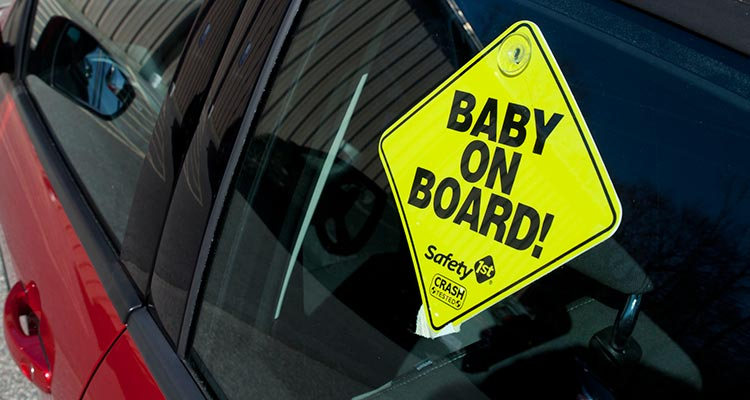
Do you remember a few years ago when I was sitting in the passenger seat in a small bar near Dongzhimen in the middle of the night, drunk and dreamy, the driver of the ride-hailing car suddenly hit the brake near the Dongsiqitiao Bridge, and I pulled my cervical spine solidly.
Adults, tall and big as they are, have such an experience, let alone children whose bodies are not fully developed yet? Or do we really need to weigh our own and our children’s safety in the balance in the split second of an accident?
Yes, the needs of young passengers actually require attention from car companies, supply chains, and even society as a whole.
On the one hand, there are parents’ concerns about safety: Can child safety seats be used? Will too much screen time cause secondary harm in accidents? Is there a more convenient way to monitor the situation of children in the back seat in real-time?
On the other hand, there are doubts about whether the existing cockpit entertainment for adults is suitable for children: Besides games and videos, are there any entertainment methods that are more friendly to children’s physical and mental health? How to ease the boredom during car rides, or satisfy the increasingly expanding curiosity?
And the convenience of existing storage, storage, and milk powder and diaper changing operations.
It is gratifying that the functional design of some mass-produced models has begun to extend an olive branch to young passengers.
This is a good start. After all, the pain points of children are also the pain points of parents.
This article is a translation by ChatGPT of a Chinese report from 42HOW. If you have any questions about it, please email bd@42how.com.
